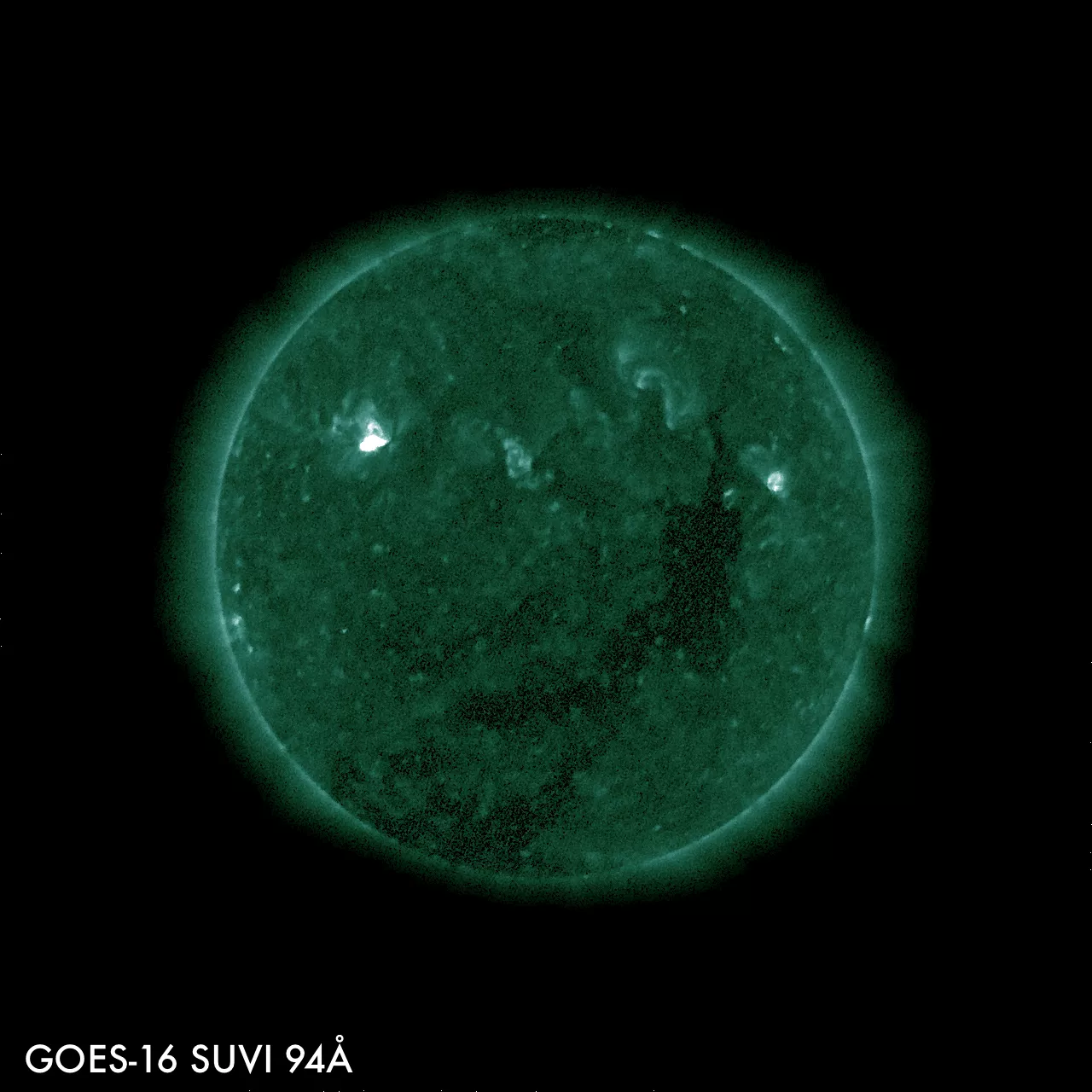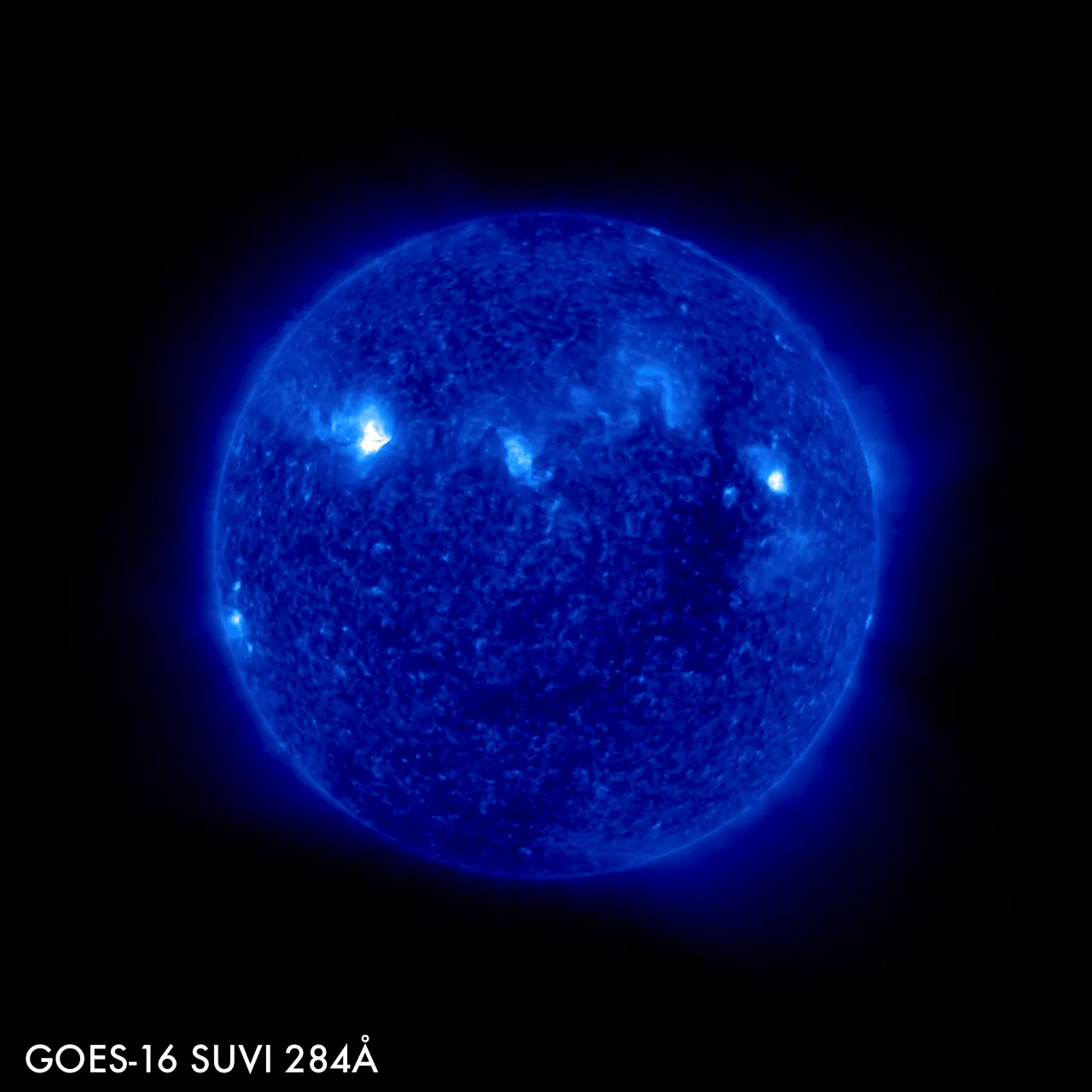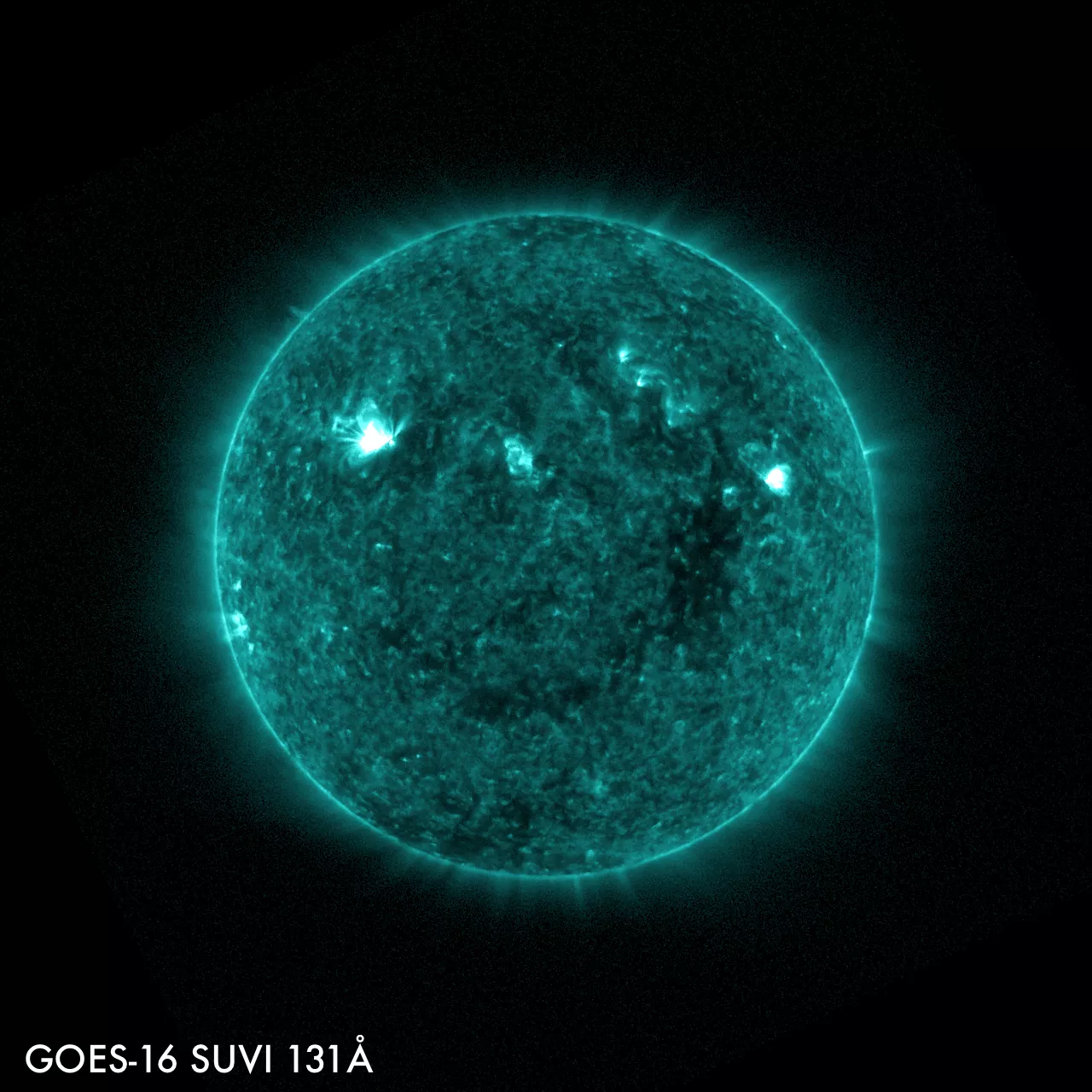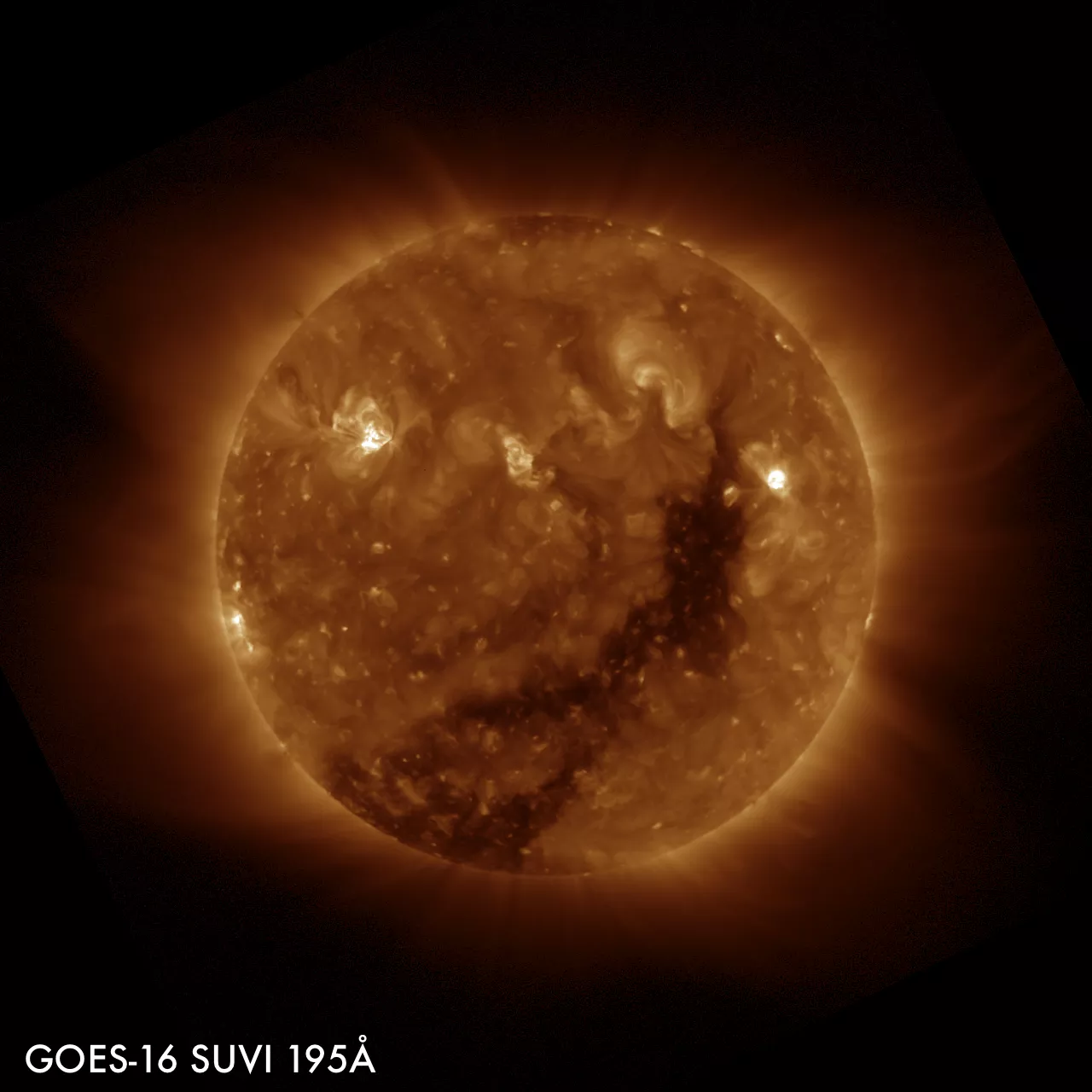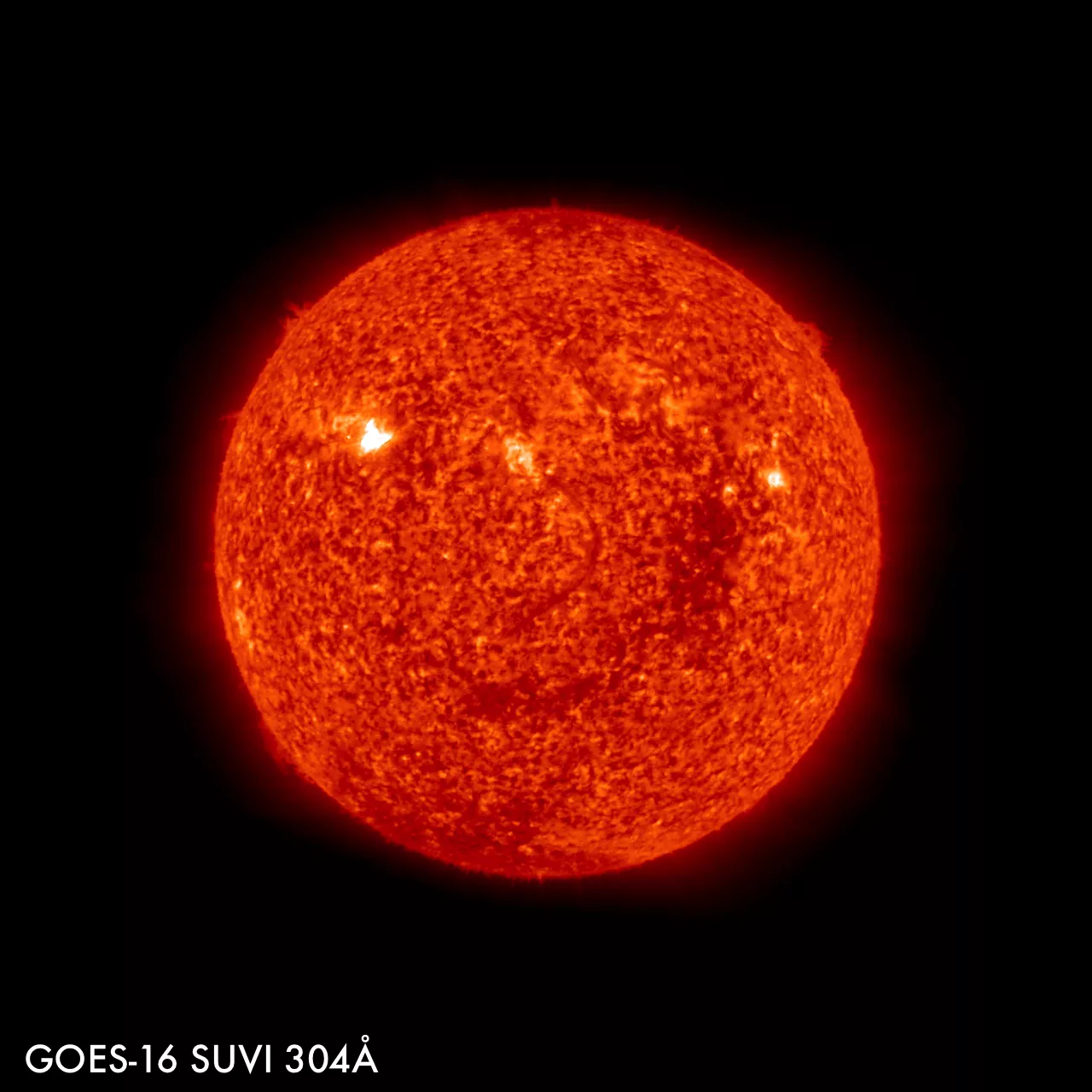The coronal hole in these SUVI images was the source of the solar wind associated with a geomagentic storm on March 27, 2017. This solar wind sped past the Earth at speeds of up to 700 kilometers per second!
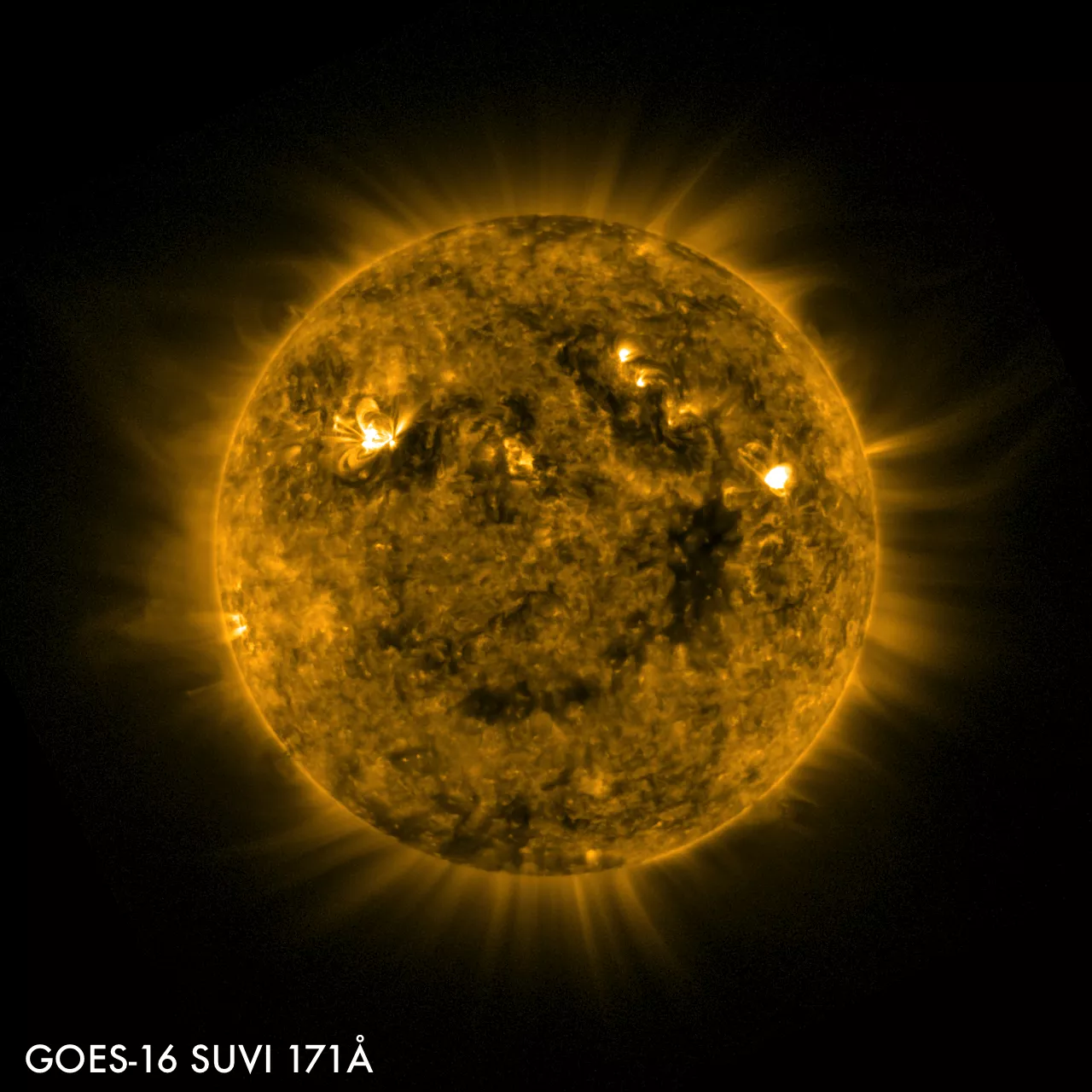
Yesterday, March 27, 2017, the Solar Ultraviolet Imager (SUVI) on board GOES-16 captured images of the very large coronal hole, wrapping most of the way around the sun!
On 3/27, NOAA’s Space Weather Prediction Center recorded a moderate G2 geomagnetic storm. Although they are not uncommon, storms of this level can cause problems with electrical grids at high latitude, pose moderate risks to satellites, and trigger intense auroral displays visible as far south as northern New York and Idaho. (For more on scales of space weather see: http://www.swpc.noaa.gov/noaa-scales-explanation)
The storm was triggered by a fast solar wind stream with speeds of up to 700 km/s that swept past the Earth. These streams come from coronal holes, large regions in the Sun’s atmosphere, or corona, where the Sun’s magnetic field opens into interplanetary space and allows the high temperature plasma in the corona to flow away from the Sun at high speed.
The coronal hole in these SUVI images was the source of the solar wind associated with yesterday's storm. Because plasma is flowing away from the Sun in these regions they have very low density, and in ultraviolet images of the corona, they appear like large, dark voids in the solar atmosphere, which is where they get the name "coronal holes."
SUVI also observed a weak C1.3 class solar flare from active region 12644, the bright region in the upper left of the solar images. The flare is especially prominent in the 94Ã… and 131Ã… channel images, both of which observe coronal plasma with temperatures that can reach to nearly 10 million degrees K, and are used especially to identify and study solar flares. C-class solar flares occur frequently, even when solar conditions are fairly quiet as they are now, and are considered to be small events that pose little risk to Earth. (Additional images appear below)
To learn more about GOES-16's SUVI instrument , visit the GOES-R.gov website.
To see more imagery, including animations, from GOES-16, visit our image gallery at on the NESDIS homepage.
GOES-16 data are currently experimental and under-going testing and hence should not be used operationally.
